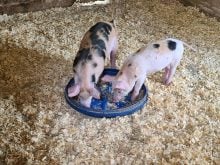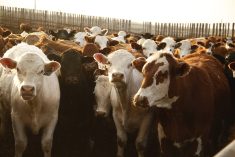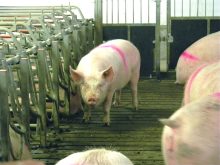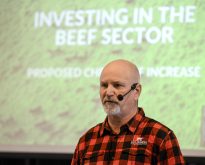Feedlot managers are going to school.
Maximizing productivity and reducing labour needs are among the core subjects being explored in three informational tours this summer organized by the Beef Farmers of Ontario (BFO) and the Ontario Cattle Feeders Association (OCFA).
The first 24-hour Feedlot Management School, held in late June, focused on advancements in feedlot housing and management.
Read Also
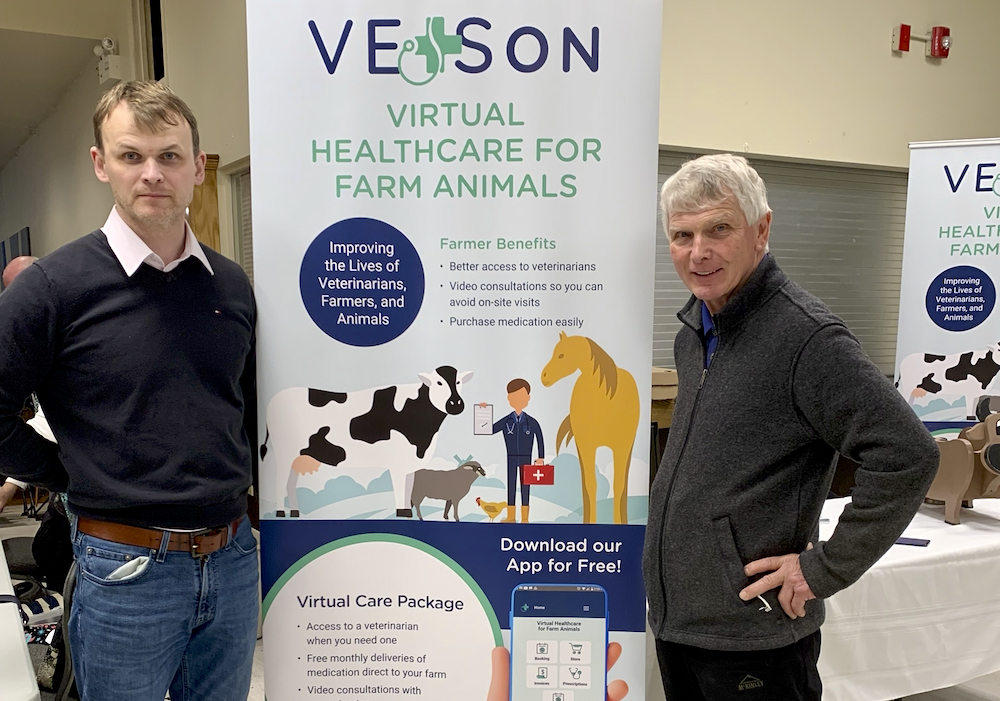
Remote care start-up adds vet medicine delivery app
Almost a year after expanding its veterinary telemedicine platform to include direct-to-farm delivery of medications, information technology start-up VETson now offers a medication ordering/distribution/delivery app.
Why it matters: Greater efficiencies in Ontario cattle feedlots aim to position the province’s beef sector as a bigger industry player in North America.
Animal health is the focus for Kloepfer Holdings Inc., located outside Ingersoll. The operation employs five full-time and five part-time staff along with the four Kloepfer brothers and encompasses cash crops, a dairy and a beef feedlot.
“To maintain good animal health on our farm, I consider there are three primary keys: fresh water, clean bedding and good feed,” said Dale Kloepfer.
“The rest is taken care of with ventilation and management by people on our operation.”
- READ MORE: Measuring feedlots for better management
As their operation grew, the Kloepfers prioritized hiring capable people who are passionate about the sector. They pay them well and give them space to share ideas, make decisions and be an active part of the team.
“Our employees’ role with our animal welfare is to keep an eye on every animal, so whether they’re bedding, cleaning or cleaning water bowls, we make sure that they see every animal move,” he said.
“If there are any issues with something, they usually write it down, let one of us know, and we will examine it ourselves and see if the animal needs to be pulled.”
The family started their feeding operation with Holstein steers but switched to beef cattle because it was difficult to source consistent Holstein groups for their 2,500 to 3,000 head finishing operation.
“We’re starting into crossbreds again just because there’s going to be an abundance of them,” said Kloepfer. “Getting coloured cattle from the west, even locally, is going to be a lot trickier in the years to come here, I think. It’s going to happen eventually, so we might as well learn to adjust now.”
Unlike many new feedlot barns with transparent roofs, the Kloepfer’s 130- by 450-foot pack barn and 100- by 500-foot slat barn, built in 2014 and 2020, have a solid roof and natural ventilation.
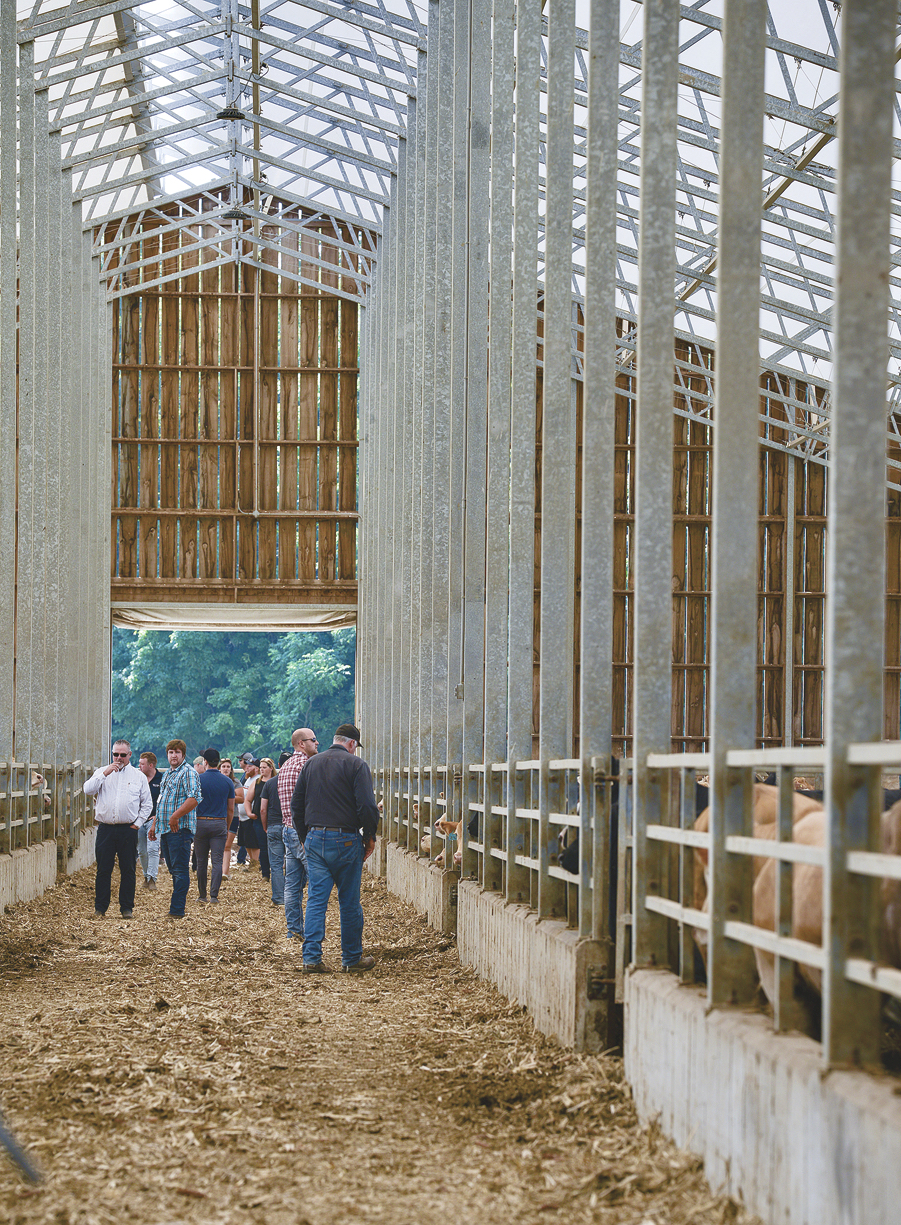
Kloepfer said pack barns are more labour intensive for cattle movement but staff must carefully monitor animal health in the slat barn.
“It’s a totally different challenge versus pack barns,” he said. “You want to make sure that if there is a lame animal in a slat barn, you remove it right away onto a pack. Ninety per cent of the time, they will recover and carry on.”
The pack barn manure is stockpiled in wheat fields and spread after harvest, but the slat barn can hold 10 to 11 months of manure.
“We’ve done samples, and the stuff is like gold,” said Kloepfer. “With the price of fertilizer now, that’s an even bigger saving.”
The cattle transfer from the pack barn to the slat barn at 900 pounds and return at 1,300 to 1,400 pounds.
“We have four rations — a starter, a grower, and then we have a Holstein finishing ration and a beef finishing ration,” Kloepfer said.
Pack barn steers get 81 per cent dry matter, which develops the rumen, saves time and has less spoilage, offsetting the extra feed cost.
The corn ration is mostly grown on-farm, and they purchase most of the hay and the straw for their bedding mix. The straw-sawdust bedding mix in the pack barn lasts up to three months and is kept lighter in summer so cattle can benefit from the concrete’s coolness.
In addition, bedding from the dairy barn maternity pens is recycled into the pack barn, further cutting costs, and they use dry horse manure in the scrape alley.
Feed intake increases when steers move from the pack barn to the slat barn but quickly drops to the same or slightly less. However, Kloepfer said feed conversion is better on slats.
“Our overall gain is a few points less than on pack (on average). The steers were probably about 3.5 pounds per day, maybe 3.6 versus likely four on the outside yards. Heifers are three consistently; maybe 3.2 if you get lucky (and) on pack. It varies, sometimes you’re 2.7, sometimes your 3.5; it just depends on the group of cattle.”
That translates into about one per cent more yield on slats versus the pack but fewer animals finish off slats, usually moving at 1,500 to 1,550 pounds compared to pack at 1,700 pounds or more.
Kloepfer said he’d make changes if he could. First, he’d flatten the pack barn floor, removing a curb. Then he’d design the barn around the processing area, not the other way around.
“When we built this (pack) barn here, we thought we’ll make a little spot at the end of the barn,” he said. “It works. There’s nothing wrong with it (but) we should have designed it a little bit easier for us and the employees for cattle handling.”
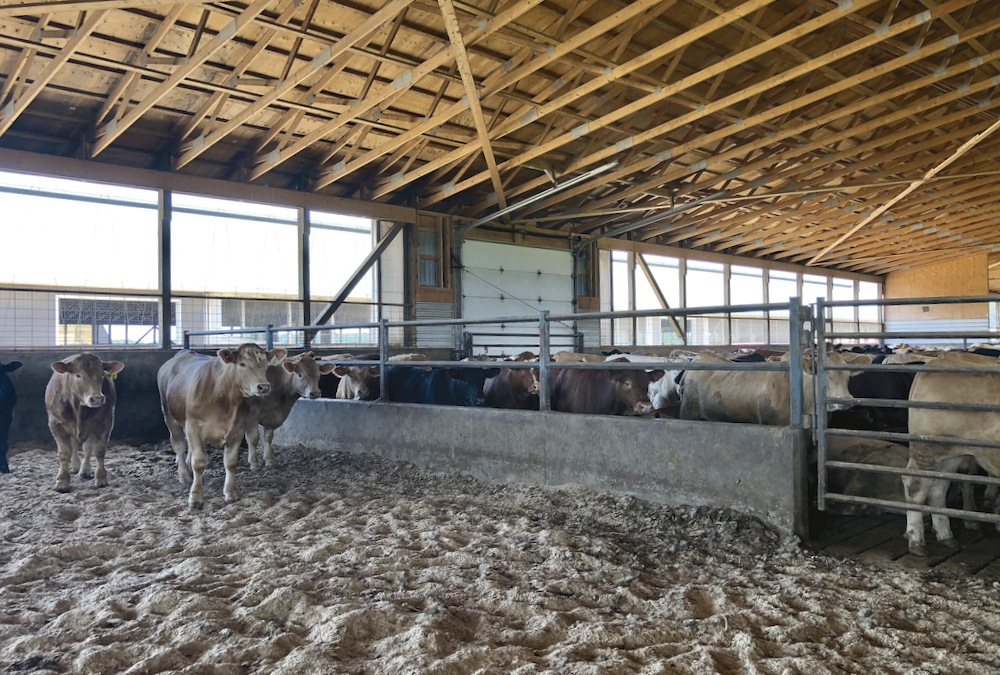
Reducing labour needs and making cattle handling easier was also a goal for the Soudants, who loaded cattle into their new We Cover grooved-floor barn at Dave Gardiner Farms Inc. near Kirkton, Ont., in September 2021.
The barn is light and airy, with automatic curtains triggered to open based on four temperature sensors. Combined with two large barn-end doors, the natural airflow makes fans unnecessary.
Manure is scraped every three weeks and stored at the barn’s north end, contained by a six-foot wall under an extended roofline to protect it from snow and rainfall.
While the barn was designed to maximize livestock health and decrease labour, Lexi Soudant, who manages cattle health, said the bale processor provided a surprising degree of labour savings. It made re-bedding easier and lowered straw consumption, allowing for a more extended period between cleanouts, she said.
“(Moving cattle) is usually a two- or three-person job depending on the pen in the barn,” she said. “We don’t have to move cattle to re-bed. We just re-bed with the cattle in the barn.”
Gordon Dibble said Dibbhurst Farm’s new barn could be run with one person, moving cattle, scraping or re-bedding the slope pack. Handling facilities used to require three people, but now it can be used with two.
“We just tried to cut down as much as we could when we built the new barn,” said Dibble. “My favourite part of the new barn is the slope pack that saves us bedding, time and keeps the intakes more consistent.”
He has not cleaned the pens since the cattle arrived in October. Instead, they scrape the outside every five days and try to bed every other day down the centre alley.
Dibble said some new barns don’t have the centre alley, but they use theirs for feeding and a fast sort-back to either return cattle to a pen or move them to a truck.
Jim Clark, Ontario Cattle Feeders Association executive director and Ontario Beef Market Development Program CEO, said the industry’s trajectory is clear, with opportunities for large and small beef cattle operators in Ontario.
“I believe firmly in my heart that within the next 10 years, Ontario is going to hold a strong position in the North American meat market as far as feeding cattle here,” Clark said.





